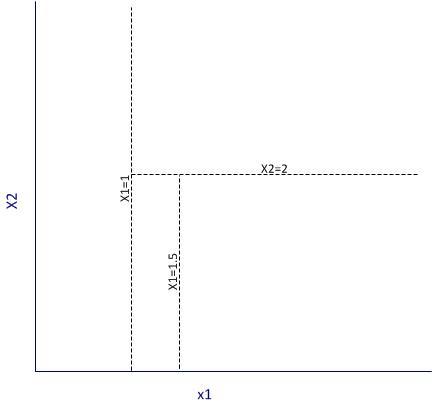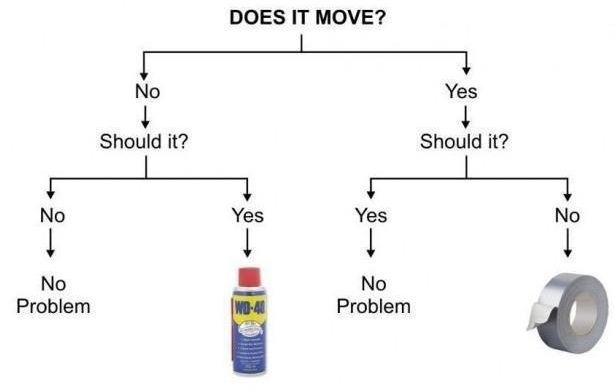A bit about the algorithmThe rpart algorithm works by splitting the dataset recursively, which means that the subsets that arise from a split are further split until a predetermined termination criterion is reached. At each step, the split is made based on the independent variable that results in the largest possible reduction in heterogeneityof the dependent (predicted) variable.
Splitting rules can be constructed in many different ways, all of which are based on the notion of impurity- a measure of the degree of heterogeneity of the leaf nodes. Put another way, a leaf node that contains a single class is homogeneous and has impurity=0. There are three popular impurity quantification methods: Entropy (aka information gain), Gini Index and Classification Error. Check out this article for a simple explanation of the three methods.
The rpart algorithm offers the entropy and Gini index methods as choices. There is a fair amount of fact and opinion on the Web about which method is better. Here are some of the better articles I’ve come across:
https://www.quora.com/Are-gini-index-entropy-or-classification-error-measures-causing-any-difference-on-Decision-Tree-classification
http://stats.stackexchange.com/questions/130155/when-to-use-gini-impurity-and-when-to-use-information-gain
https://www.garysieling.com/blog/sklearn-gini-vs-entropy-criteria
http://www.salford-systems.com/resources/whitepapers/114-do-splitting-rules-really-matter
The answer as to which method is the best is: it depends. Given this, it may be prudent to try out a couple of methods and pick the one that works best for your problem.
Regardless of the method chosen, the splitting rules partition the decision space (a fancy word for the entire dataset) into rectangular regions each of which correspond to a split. Consider the following simple example with two predictors x1 and x2. The first split is at x1=1 (which splits the decision space into two regions x1<1 and x1>1), the second at x2=2, which splits the (x1>1) region into 2 sub-regions, and finally x1=1.5 which splits the (x1>1,x2>2) sub-region further.
[color=rgb(255, 255, 255) !important]

Figure 2: Example of partitioning
It is important to note that the algorithm works by making the best possible choice at each particular stage, without any consideration of whether those choices remain optimal in future stages. That is, the algorithm makes a locally optimal decision at each stage. It is thus quite possible that such a choice at one stage turns out to be sub-optimal in the overall scheme of things. In other words, the algorithm does not find a globally optimal tree.
Another important point relates to well-known bias-variance tradeoff in machine learning, which in simple terms is a tradeoff between the degree to which a model fits the training data and its predictive accuracy. This refers to the general rule that beyond a point, it is counterproductive to improve the fit of a model to the training data as this increases the likelihood of overfitting. It is easy to see that deep trees are more likely to overfit the data than shallow ones. One obvious way to control such overfitting is to construct shallower trees by stopping the algorithm at an appropriate point based on whether a split significantly improves the fit. Another is to grow a tree unrestricted and then prune it back using an appropriate criterion. The rpart algorithm takes the latter approach.
Here is how it works in brief:
Essentially one minimises the cost,  , a quantity that is a linear combination of the error (essentially, the fraction of misclassified instances, or variance in the case of a continuous variable),
, a quantity that is a linear combination of the error (essentially, the fraction of misclassified instances, or variance in the case of a continuous variable),  and the number of leaf nodes in the tree,
and the number of leaf nodes in the tree,  :
:

First, we note that when  , this simply returns the original fully grown tree. As
, this simply returns the original fully grown tree. As  increases, we incur a penalty that is proportional to the number of leaf nodes. This tends to cause the minimum cost to occur for a tree that is a subtree of the original one (since a subtree will have a smaller number of leaf nodes). In practice we vary
increases, we incur a penalty that is proportional to the number of leaf nodes. This tends to cause the minimum cost to occur for a tree that is a subtree of the original one (since a subtree will have a smaller number of leaf nodes). In practice we vary  and pick the value that gives the subtree that results in the smallest cross-validated prediction error. One does not have to worry about programming this because the rpart algorithm actually computes the errors for different values of
and pick the value that gives the subtree that results in the smallest cross-validated prediction error. One does not have to worry about programming this because the rpart algorithm actually computes the errors for different values of  for us. All we need to do is pick the value of the coefficient that gives the lowest cross-validated error. I will illustrate this in detail in the next section.
for us. All we need to do is pick the value of the coefficient that gives the lowest cross-validated error. I will illustrate this in detail in the next section.
An implication of their tendency to overfit data is that decision trees tend to be sensitive to relatively minor changes in the training datasets. Indeed, small differences can lead to radically different looking trees. Pruning addresses this to an extent, but does not resolve it completely. A better resolution is offered by the so-called ensemble methods that average over many differently constructed trees. I’ll discuss one such method at length in a future post.
Finally, I should also mention that decision trees can be used for both classification and regression problems (i.e. those in which the predicted variable is discrete and continuous respectively). I’ll demonstrate both types of problems in the next two sections.





 雷达卡
雷达卡

















 , a quantity that is a linear combination of the error (essentially, the fraction of misclassified instances, or variance in the case of a continuous variable),
, a quantity that is a linear combination of the error (essentially, the fraction of misclassified instances, or variance in the case of a continuous variable),  and the number of leaf nodes in the tree,
and the number of leaf nodes in the tree,  :
:
 , this simply returns the original fully grown tree. As
, this simply returns the original fully grown tree. As  increases, we incur a penalty that is proportional to the number of leaf nodes. This tends to cause the minimum cost to occur for a tree that is a subtree of the original one (since a subtree will have a smaller number of leaf nodes). In practice we vary
increases, we incur a penalty that is proportional to the number of leaf nodes. This tends to cause the minimum cost to occur for a tree that is a subtree of the original one (since a subtree will have a smaller number of leaf nodes). In practice we vary 
 (this is CP in the table above). One can find CP programatically like so:
(this is CP in the table above). One can find CP programatically like so:


 京公网安备 11010802022788号
京公网安备 11010802022788号







